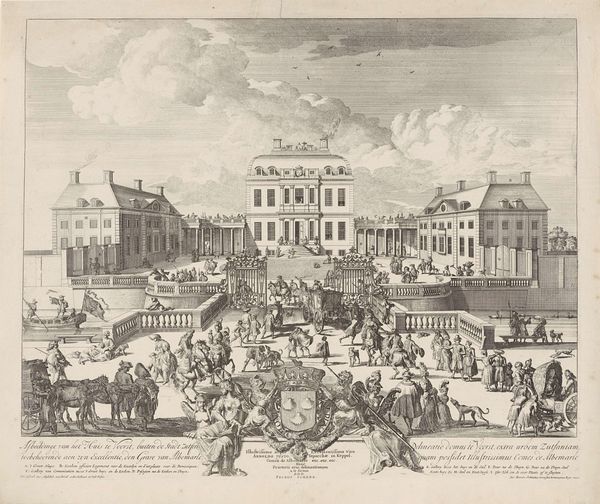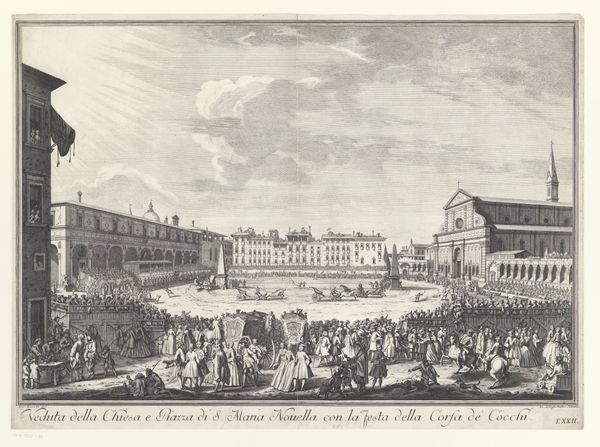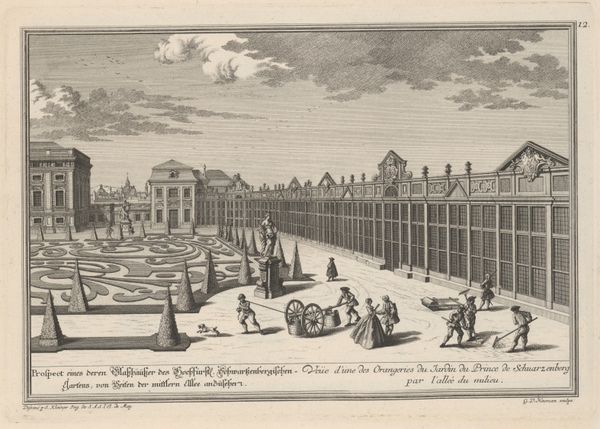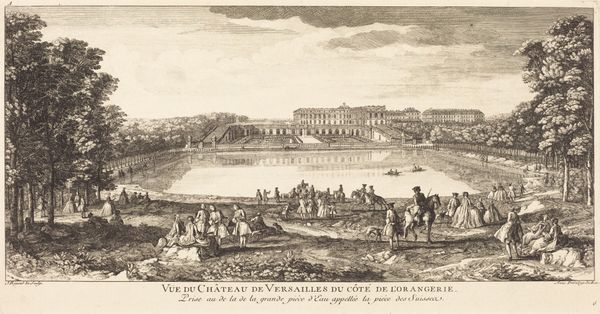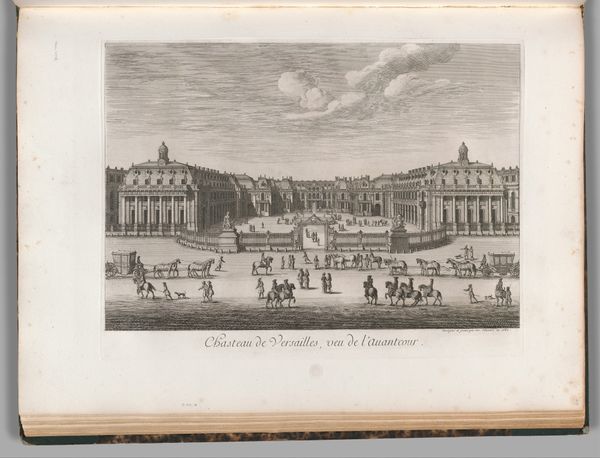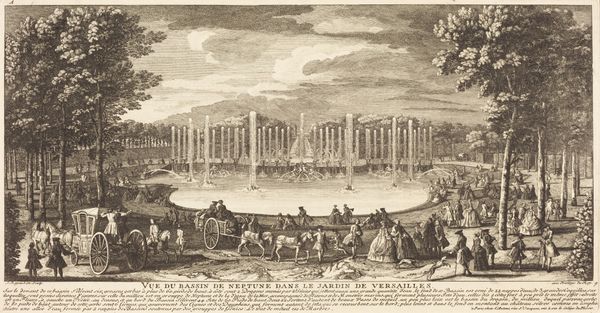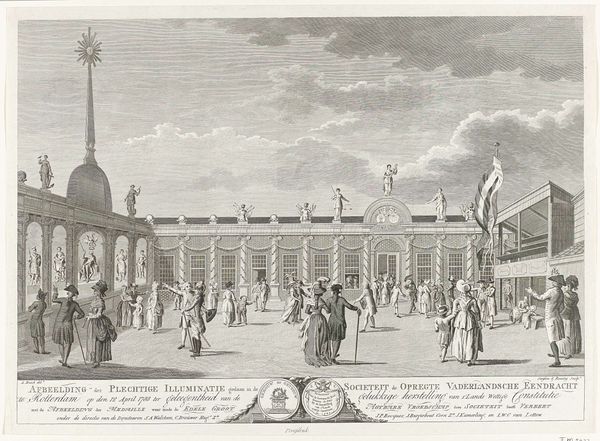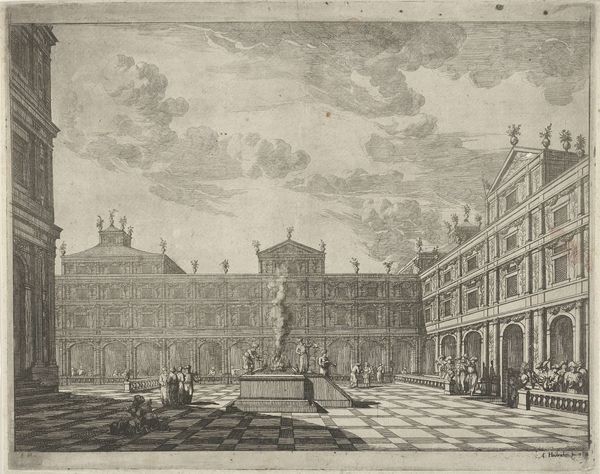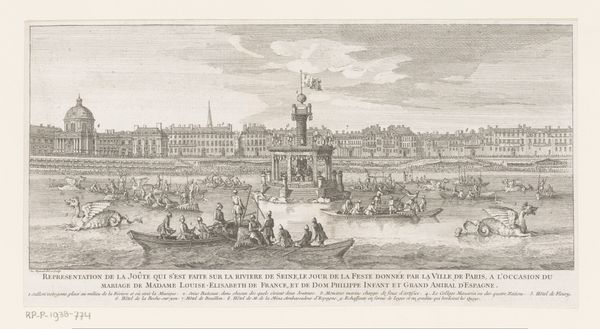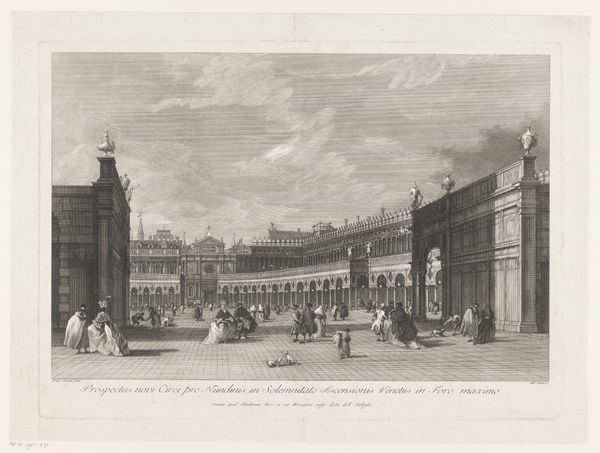
Vue de Trianon dans le Parc de Versailles du Cote de l'Avenue
0:00
0:00
print, etching, engraving, architecture
#
baroque
# print
#
etching
#
landscape
#
cityscape
#
engraving
#
architecture
Copyright: National Gallery of Art: CC0 1.0
Editor: This is "Vue de Trianon dans le Parc de Versailles du Cote de l'Avenue", an etching and engraving by Jean-Baptiste Rigaud. The crisp lines and bustling figures give it a sense of ordered chaos, almost theatrical. What do you see in this piece? Curator: Immediately, the ordered architecture clashes with the disorganized activity of the figures. The palace itself becomes a stage upon which people play out this… what exactly? Notice the figures carefully arranged, the groups interacting—consider them as symbolic actors performing prescribed social roles. Editor: Prescribed, how so? Curator: Think of Versailles as a stage itself. Everything—from the gardens to the fashion—is carefully crafted to project an image of power, control, and wealth. The people become extensions of this idea. What symbols are present in their actions and inactions? What narratives do the landscape and architectural structures construct? Editor: So, the building isn't just a building, but a symbol of absolute power reflected in every detail. And each little scene amplifies that power. Curator: Exactly. Consider also how prints served to disseminate this idealized image throughout Europe. It’s a cultural artifact that carries a huge weight of meaning beyond just its aesthetic qualities. What have you observed about societal changes through cultural artworks? Editor: I see how it connects to visual symbolism – I never thought of Versailles as a piece of propaganda before, but that makes total sense. Curator: Indeed. A landscape becomes a carefully constructed stage where power is always performed.
Comments
No comments
Be the first to comment and join the conversation on the ultimate creative platform.
